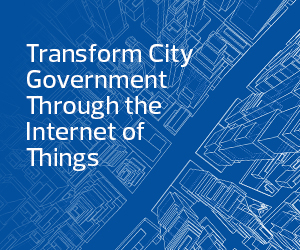How Data Analysis Changed Carlsbad’s Fire Department
Van Gilluwe has worked with Carlsbad Chief Innovation Officer David Graham on these initiatives to facilitate digital transformation and modernization within the city’s emergency services. The result? The city has made more data-driven decisions about its operations, including where new fire stations should go, where to add more trucks, where simultaneous incidents occur the most, which trucks are most utilized, the lifecycle of its emergency vehicles and how to better manage staff.
Using the FOIS to analyze real-time data on dispatches, van Gilluwe is also able to see where Carlsbad’s fire department is aiding surrounding cities’ fire departments and vice versa. Analyzing this real-time data on a map sheds light on inefficiencies and helps lead van Gilluwe’s team to questions that can drive creative solutions.
“If the cities below and above us are giving us more aid, or they’re taking more aid from us, what’s the balance here?” he said. “How many times did a Carlsbad fire truck … respond to that fire station area to a call? How many times did Encinitas have to respond there because we were busy with something else? Do I have enough fire trucks here, enough teams here?”
In a CIOReview article, Graham called the FOIS a “first-of-its-kind” data-sharing agreement that uses the city’s existing geographic information system to create a real-time data visualization and reporting system to improve response times and enhance public safety.
READ MORE: How AI insights and predictive analytics can combat wildfires.
Leveraging Existing Data to Lead Transformation
As van Gilluwe’s team looks deeper into the data, it can see where exactly incidents are happening, when they’re occurring and the type of incidents happening to make informed decisions about ways to improve, such as deciding between more trucks or an entirely new fire station in a more isolated area.
As for where the data comes from, van Gilluwe said that Carlsbad just takes the information that all fire departments report on already through Standards of Cover requirements. The difference, according to van Gilluwe, is that most fire departments take close to a year to put these reports together, review them and find anomalies, leaving city councils with data a year or so out of date.
“These are things shown in a Standards of Cover report, but typically the fire chief only gets to see a year ago’s data … the city council might not see something for years,” he said. “And they’re making all their decisions about where they’re going to put their next fire station based on 2- to 4-year-old data.”
With the real-time data from the FOIS, Carlsbad is seeing dispatch data as quickly as month over month, allowing the city’s fire departments to act on information that reflects the current situation. For example, data drove the city to deploy a fire station tent and administration building, known as Temporary Fire Station 7, as a cost-effective way to test whether a fire station on the coast would be useful.
“Typically, a fire station might cost around $15 million to $25 million to build. This cost us about $1.5 million to try,” van Gilluwe said. “So, why not try to make sure the data matches? That’s what we do a lot in Carlsbad.”
Keep this page bookmarked for our coverage of the Smart Cities Connect 2023 fall conference. Follow us on X, formerly known as Twitter, at @StateTech. Join the conversation using the hashtag #SCC23.











